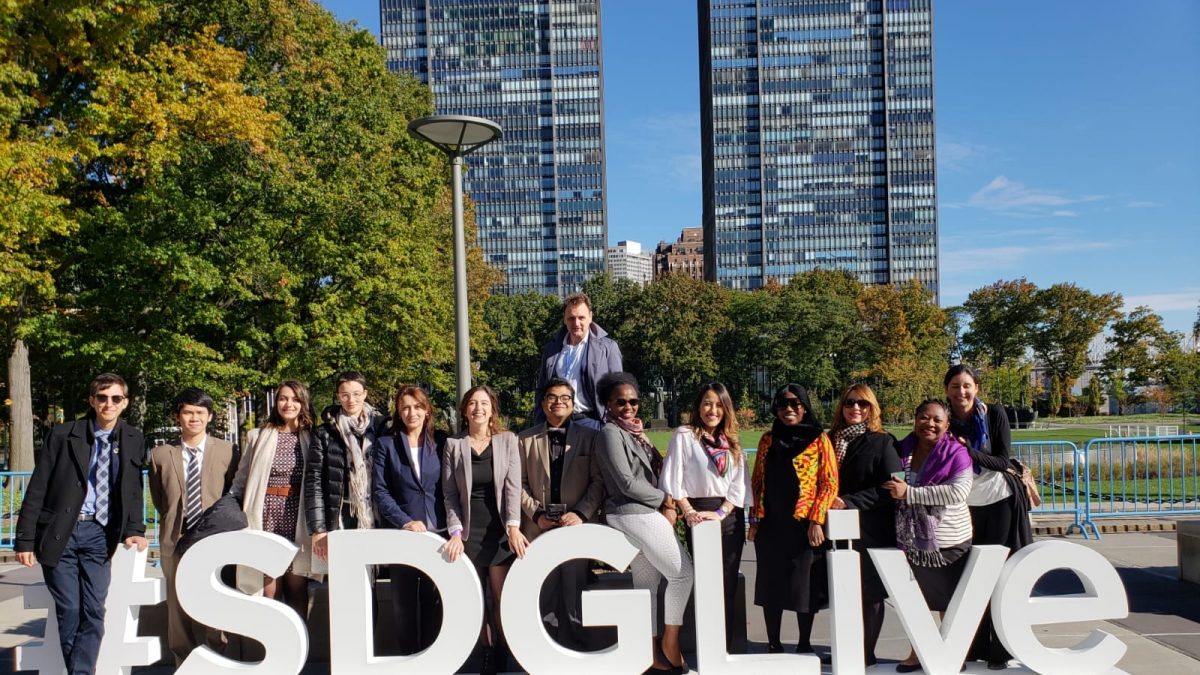By Gavin Charles
I recently had the opportunity to join a dozen other young policy professionals from around the world for a week of learning and sharing about sustainable development.
Quite appropriately, we met in New York City, where three years ago the 193 countries of the world committed unanimously to achieve 17 Sustainable Development Goals (SDGs) by 2030 through a specific, measurable, and time-bound framework.
Most of the SDGs focus on what we seek to achieve – an end to extreme poverty and hunger, greater equality within and between countries, peace and the institutions needed to preserve it, and so on.
Our week was an exercise in partnership – working across borders and barriers to overcome common challenges and pursue common cause. In this vein, one of the goals stands out.
Sustainable Development Goal 17 focuses not on the end but the means. The means identified is partnerships.
With Goal 17, the 2030 Agenda acknowledges that no one type of actor – governments, civil society, or the private sector – can transform our world alone.
In Canada, civil society has begun exploring new partnerships for the SDGs in recent years, particularly by bringing international and domestic civil society organizations – including international and local community development organizations, community foundations, thinktanks and others – into closer conversation around the local and global dimensions of the 2030 Agenda. This collaboration has now become Alliance 2030. As groups move outside of their comfort zones and core areas of work, these conversations are becoming more creative and dynamic. New ideas are being generated, and new collaborations are being initiated.
The Canadian federal government is also an advocate for partnership. Eight federal departments responsible for implementing the SDGs in Canada, led by Employment and Social Development Canada (ESDC) and with strong support from Global Affairs Canada, have come together to pursue a joint and integrated approach to SDG implementation in Canada and overseas.
In the international sector, the Policy for Civil Society Partnerships for International Assistance, which was developed and subsequently revised in consultation with civil society, lays out objectives and supporting indicators for partnerships between government and civil society in the areas of sustainable global development cooperation and humanitarian assistance. The Policy is now being implemented and monitored by an advisory group including both civil society and government.
Nonetheless, there is still work needed to make whole-of-society partnerships in Canada as effective and impactful as possible to support the achievement of the SDGs.
As in the past, this year’s official Canadian delegation to the UN High-Level Political Forum included civil society members. The civil society representatives are self-selected – an important recognition of CSOs as independent development actors. But beyond a UN pass and a daily check-in, there was limited scope for the civil society delegates to shape or participate in official Canadian contributions to the Forum. Government and civil society may appear on one Canadian list, but they are still too siloed in their activities.
Fortunately, efforts are now underway at ESDC through a new SDG Unit to improve the consistency, impact and long-term meaningful engagement of these exchanges and partnerships between government and other stakeholders, including civil society.
As these partnerships come together, one way of considering how to make them truly effective is by thinking about both the inputs to and the outcomes from a partnership.
Too often, countries take a solely input-based approach to partnership, seeking to increase the quantitative participation and consultation of civil society and other stakeholders in policy processes, without any qualitative assessment of the impact of that engagement. They measure what goes in, without evaluating what comes out.
Moving forward, and to demonstrate real leadership on SDG 17 as it builds a whole-of-society approach, Canada should commit to an outcome-based model of partnership. This would mean that success would be assessed based not just on how much input is contributed, but on how well policy and program decisions reflect those contributions. To some extent, there is already precedent for this in Canada through the process by which the government consults on and develops its Federal Sustainable Development Strategy.
Ultimately, the best measure of whether a partnership is working is how and whether the partnership helps policies and programs address the needs of key stakeholders and improve real-world outcomes.
This means that in addition to creating appropriate structures for partnership, Canada should also ensure that partners have agency to substantively influence the decisions and results that follow. By drawing in more diverse stakeholders and improving the terms and impact of their participation, Canada can boost both the quantity and quality of partnerships for sustainable development.
Canada is well-positioned to be a global leader in taking a whole-of society approach to implementing the SDGs. In so doing, Canada would not only improve its performance on Goal 17, but also enhance the ability of Canadian governments, civil society, private sector and others to contribute to the 2030 Agenda.
Gavin Charles is Policy Officer at the Canadian Council for International Co-operation. He recently attended the Friedrich-Ebert-Stiftung Academy on the Sustainable Development Goals in New York City.
